Escanaba Trough: Exploring the Seafloor and Oceanic Footprints
May 26 - June 14, 2022
Field Log: June 7
During one of our last dives at the northern portion of the Escanaba Trough (“NESCA”), as we traveled across a mud flat towards another hydrothermal area, we came across our most photogenic creature yet, a small octopus scooting across the seafloor.
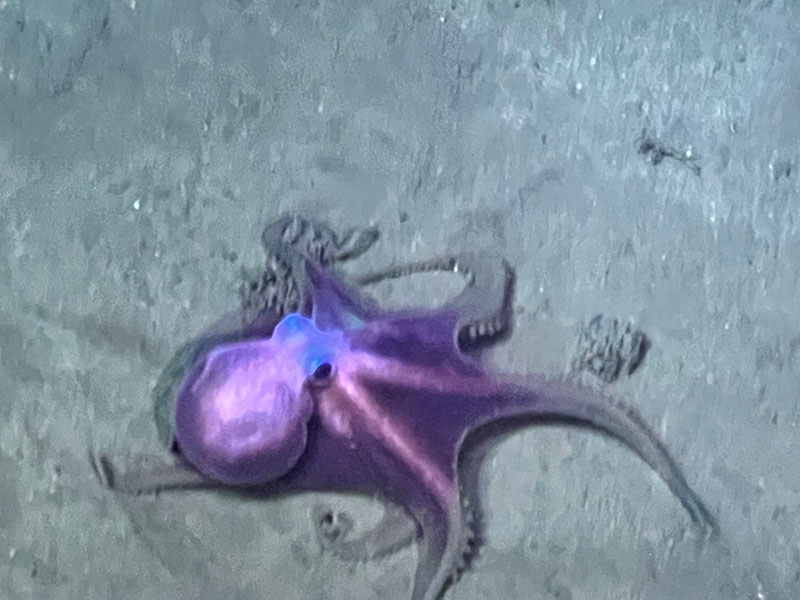
The hydrothermal area consisted of what looks like an extinct chimney, covered with a bacterial film and many small sponges. Sponges are simple animals that eat by catching tiny suspended plankton that float in the water that flows through the sponge’s hollow interior. This process is called filter feeding and is also used by other animals such as clams.
All this exploration activity is controlled via a two-mile long cable from the remotely operated vehicle (ROV) control van onboard the ship. There are about 30 screens in the van, monitored by 3 rotating 4-hour shifts. Each shift consists of three scientists that guide and document the work and three engineers that drive and control ROV Jason.
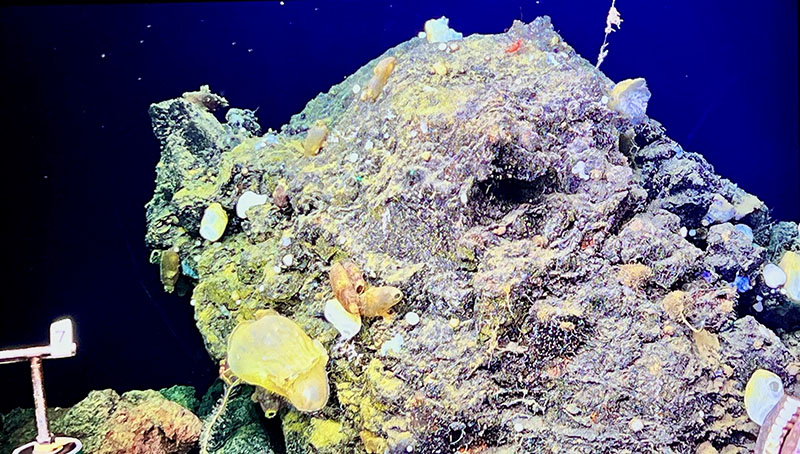
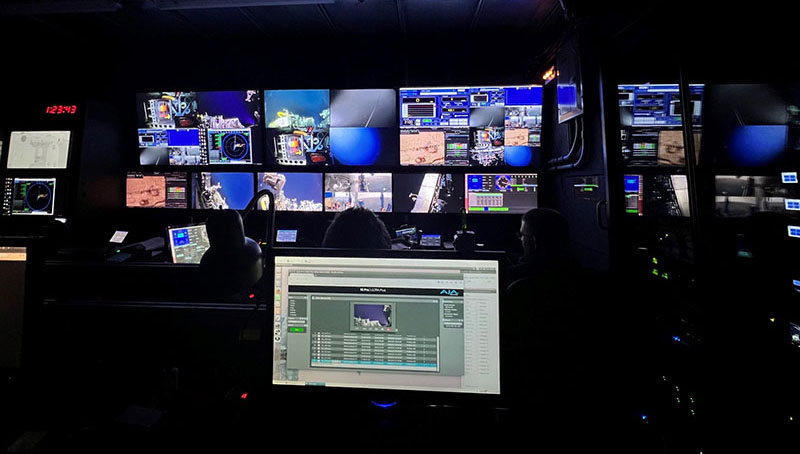
After finishing investigating the northern portion of the Escanaba Trough, we headed south to the southern Escanaba Trough (“SESCA”). On the way, we briefly diverted to Eureka, California, for a crew transfer, which worked out well because it caused us to avoid a storm with 40-knot wind gusts. Not much science gets done in rough weather, so no time was lost.
The SESCA site is older and has less hydrothermal activity, so it will be interesting to contrast it with NESCA. In addition to inactive mounds and chimneys, we’ve seen a number of clams living in asphalt patches, tube worms with small white crabs, and sponges.
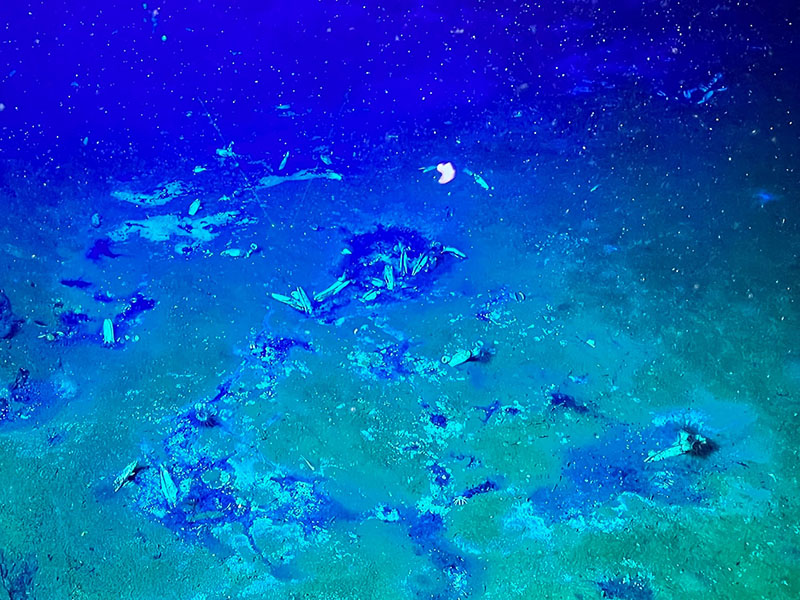
There was a beautiful sunrise this morning, a purple ocean draped by a crimson curtain of clouds. Naturally, the weather began to pick up later this morning, lending credence to the adage “red sky in morning, sailor take warning.” We have several more ROV dives, CTD-rosette water column profiles, and sediment gravity cores left to do before the expedition ends early next week.
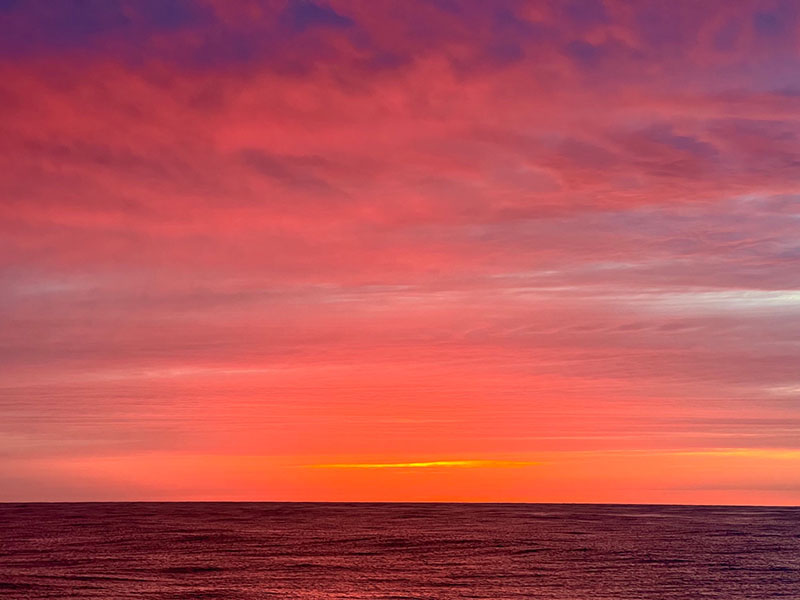
By Paul Knorr, Bureau of Ocean Energy Management
Published June 8, 2022